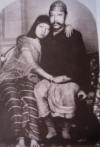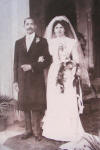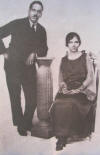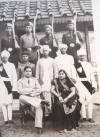|
|
the-south-asian.com March 2007 |
|
|||
|
March 2007 Visual Arts
Sports
Books Between
Heaven and Hell
|
|
||||
|
SEPIA-TINTED MEMORIES A recent exhibition in Delhi chronicled the lives of people of a bygone era. The stunning pictures spanned 90 years from India’s first war of independence in 1857 till the Independence in 1947…. ‘Stunning photographs!’ The exclamation was repeated over and over again and louder each time the crowd moved from one photograph to the other. The Venue: Indira Gandhi National Centre for the Arts in Delhi. The exhibition: Representing Indian Women 1857-1947 - A Visual Documentary, a display of over 250 photographs of Indian woman spanning 90 years from the first war of independence in 1857 till the independence in 1947. The sepia-tinted framed images - a throwback on the lives of people of a bygone era, besides being thoroughly enchanting, were a lesson in history, photography and aesthetics and provided a window into the lifestyles of the nineteenth and early twentieth century.
Take for example the picture of Monomohini with her husband Maharaja Birchandra of Tripura in circa 1880. While his right arm embraces her intimately, with his left hand he operates the lever connected to a camera. An enthusiastic photographer, he was among the first kings of India to organize an annual photographic exhibition in his palace. These archival photographs were not just moments frozen in time but aids to understanding India’s multi-faceted history. For example Tripura’s modern era began with Maharaja Birchandra who introduced contemporary administrative practices in the kingdom and established Bengali as the official language. Put up by the Centre for Women’s Development Studies, the exhibition portrayed the socio-cultural shift in the status of women in almost a century. Piles of sadly neglected memorabilia that retold the tale of many lives - and not in a uni-dimensional tightly woven way, but told through tender images of love. The exhibition was also the history of the early days of the camera in India. Pictures were selected not because of their great quality of composition or sharp contrast and focus but what was paramount was the documentation of an event or an individual. The creators of these pictures were obviously enthusiastic amateurs and not great photographers. Thus the viewer has to look at what may lie behind the picture, imagine 'hidden' backdrops - and also to see the specific image in the context of the larger canvas. Earliest Photographs The earliest photographs of women placed them in the family context. Families and individuals stood or sat elaborately dressed, framed against the backdrop of studio sets.
Take for example the picture of George Thomas and wife Patricia clicked in 1910 on the day of their wedding outside a hotel in Lucknow. Viewers were informed that Thomas was an eminent Christian of Uttar Pradesh who married a Scotswoman Patricia. He was later knighted and went on to become the Chief Justice of the High Court of Awadh.
Similarly there was a picture of a prominent Goa lawyer Constancio Miranda and wife Maria Zulema, perhaps parents of celebrated cartoonist Mario Miranda (though no one confirmed this). Maria who wears a long dress in the style of the day was half Goanese and half Portuguese and was educated at the Convent of Jesus and Mary in Bombay. But she was an exception in that she studied in a school. In the early part of the last century newly emergent professional and middle-class men viewed limited education for girls as an effective channel for the creation of well-versed companions and homemakers.
Take the case of S.K.Srivastava and wife Prasannamayee who was educated at home. The picture has been taken in one of the princely states of the former Central Provinces and Berar. Here Srivastava, the state’s political officer poses with wife Prasannamaye, personal retinue and armed guards in a show of obvious social standing and status. There are pictures of the elegant Tarabhai, among the first Brahmins to graduate from Rajkot, the tall Rashid Jahan who in 1906 established one of the earliest schools for Muslim girls in India, the gangly Vazir Hasan who was among the first Sulaymani Bohra women to break tradition and wear a sari for her wedding. Attention-grabbing stories are appended to most of the portraits in the exhibition. Over the years as the camera starts recording the emergence of the well-heeled Indian families what becomes evident is the changing role of women. They are less coy and more willing to appear before the camera. "One look is enough and you instantly get smitten by these lovely ladies," is how an onlooker described the exhibition. But for a lover of art and photography one look was not enough. The exhibition warranted a second…and third…look. *****
|
|||||
|
Copyright © 2000 - 2007 [the-south-asian.com]. Intellectual Property. All rights reserved. |
|||||



